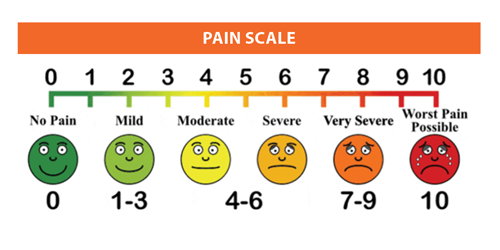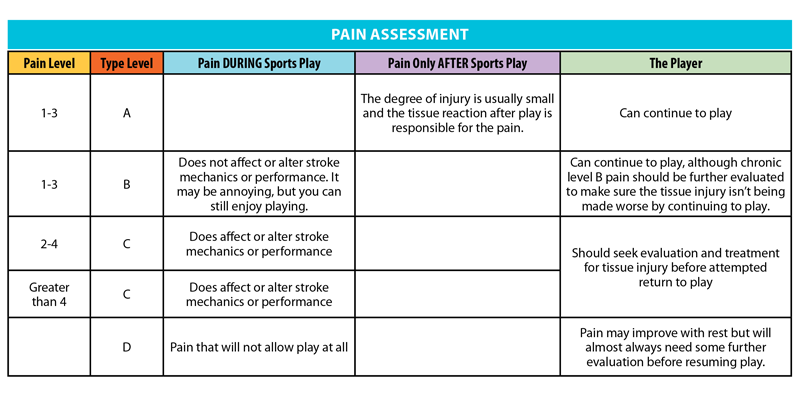Ask The Doc

Pain – and how to deal with it while trying to play
Tennis is a vigorous and often demanding sport. Any tennis player will experience bumps, hits, pulls, overloads, strains, falls and general musculoskeletal stress. Frequently one response from that exposure will be the sensation of pain, and the player will need to evaluate the reasons for and meaning of the pain and the resulting consequence for play and other activities. Several features of pain can be examined to help inform the player about the significance of the pain.
ASSESSING YOUR PAIN
One method of assessing the effect of pain is to use the Visual Analogue Scale (VAS), a subjective measurement of the intensity experienced. Rate the amount of pain you are experiencing by comparing to the visual images of the faces. This scale is best used in assessing an acute injury, the degree of acute injury and can provide general guidance about attempting to play. Pain levels below 2-3 are usually compatible with continued play, but values above 3- 4 signify enough injury that further evaluation should be done before resumption of play.


Playing with pain is usually not enjoyable playing. This article provides general comments about pain that can result from tennis play. The statements and guidelines are not meant to provide specific medical information, diagnosis or treatment of any specific painful condition. A good general rule is to remember that pain is your body talking to you, so don’t minimize it, ignore it or cover it up. Prudence recommends that caution be used when trying to “play through” the pain, and that evaluation is helpful to address the reasons for the pain and allow for continued enjoyment while playing.

If you are experiencing pain and would like to receive one-on-one evaluation, we recommend calling Lexington Clinic Orthopedics at (859) 258-8575 to schedule an appointment with one of our Orthopedic physicians or Physical Therapists (doctor referral not required). Lexington Clinic also offers a Walk-in Clinic Monday-Friday from 7:30 am – 7:00 pm (no appointment necessary).